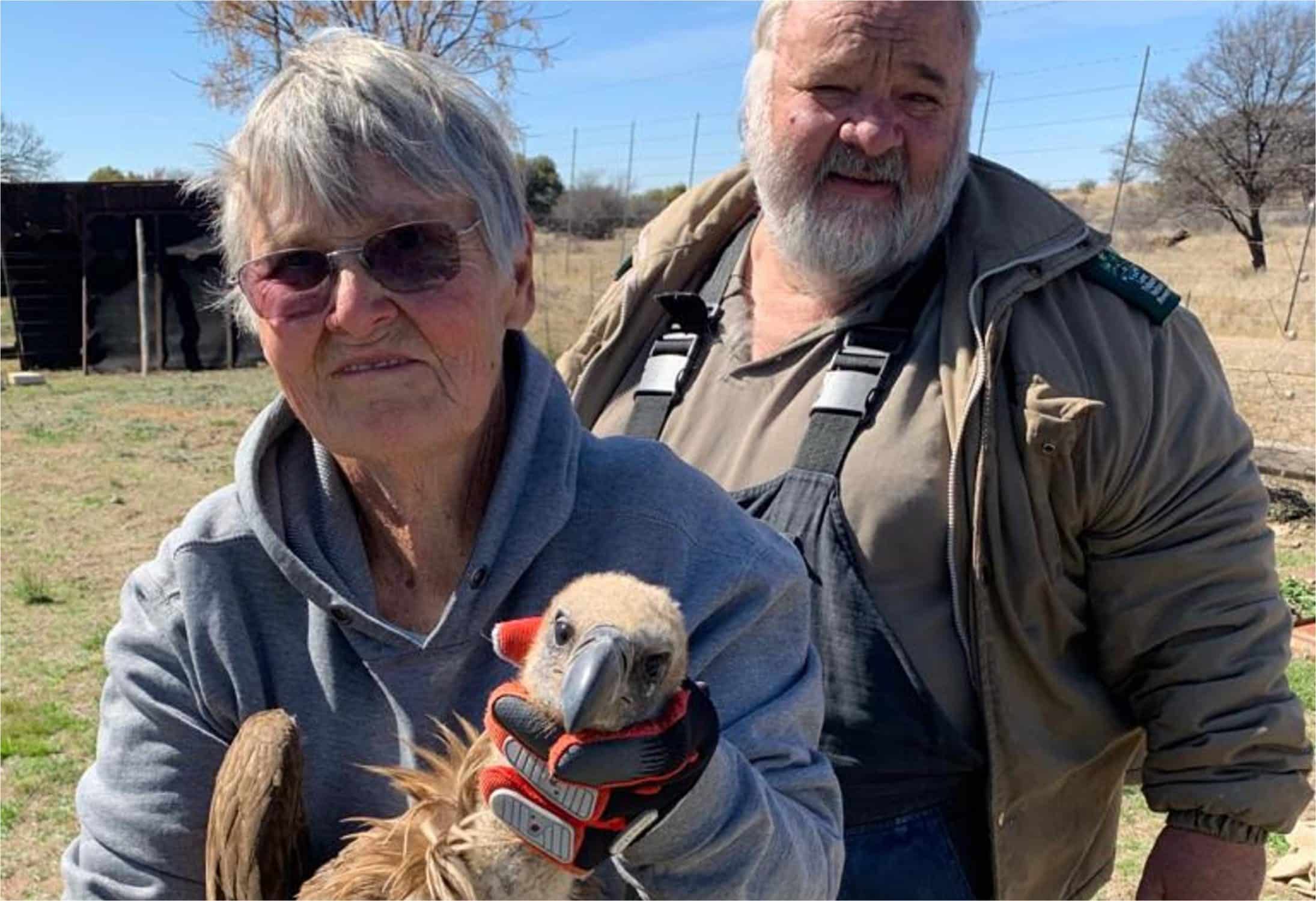By Laura Nelson
Doing vulture rescues can be exhilarating, heartbreaking or hilarious, or really fun and games. It all depends on the day and the bird. Volunteers have to be ready to do anything to get the birds to Vulpro alive.
On 16 August 2022, we had a rescue from a nature reserve just outside Vryburg. We started early, as usual, in very cold conditions – a temperature of -7°C! I collected Peter, another rescue volunteer, from Bryanston, and we went on our merry way. Everything went well on the road, but there is a twist in this tale.
My normal rescue vehicle is a Ford Bantam. However, it was in for repairs, and Philipp lent me his Opel Corsa for this trip. It has a canopy without side windows, and I was concerned about airflow in this canopy. We also had previously experienced that somehow the exhaust fumes get into it. Because of this, Philipp had taken it in for a modification to the exhaust.
He felt sure that the problem was resolved. I was less easily convinced and told Peter that we have to check whether it will be safe for the bird to travel in the back. Peter was the guinea pig while I drove. He hung his head through the connecting window into the canopy and took deep breaths. The verdict – full of exhaust fumes! We then tried a few other alternatives, like driving with the back door partly or fully open and driving with the tailgate open, but none of these options made any difference. The fumes filled the canopy. Driving with the connecting window open put the fumes into the cab. Also not acceptable. Fortunately, Peter survived the testing procedures. The only alternative was that the vulture will have to travel with us in the cab, but the crate is too big. We had to get hold of a cardboard box. No way was the bird going to be euthanised with exhaust fumes or held on our laps without some protection for us! Luckily Peter managed to source some small boxes and tape in one of the towns on the route. We reached Vryburg with no further delays.
The African White-backed vulture was safely secured in a smallish enclosure and had to be caught. It was quite feisty and was prepared to put up a fight. It had a broken wing and had obviously been grounded for quite some time, and was very thin, but it was still strong. Apparently, it had been brave enough to walk into a kraal with the cattle on a nearby farm and could be rescued. The rescuers took it to the nature reserve, where it was fed and given water by the manager, Rikus. Peter fabricated a slightly bigger box by combining two boxes and taping them together, then punching holes into it for ventilation.
After safely depositing the vulture into the box, Peter held the box on his lap during the first part of the trip. By now, it was midday, the sun was shining, the temperature was much higher, and we drove with both windows open to ensure that the bird had enough airflow. I have to confess that for the first time ever, I was travelling with Karbadust but had completely forgotten to use it. That was to be regretted! It wasn’t long before Peter informed me that the lice were coming out of the box through the holes! We changed places after a couple of hours, and I held the box, with the lice still crawling through the holes. We were both itching and scratching madly! One could only laugh at the situation and bear up. The bird did not seem to mind its slightly cramped quarters and finished the trip in good spirits.
Luckily the Corsa was also getting into the fast driving mode like the Bantam. It just wanted to get the vulture to Vulpro as quickly as possible. On reaching Vulpro, and after being assessed and ‘karbadusted’, it was given food. It could not eat fast enough. It was so hungry!
Although its wing would be amputated, and the vulture would become another permanent resident at VupPro, it was a successful and fun rescue. May its offspring get back into the wild and help save the species.

